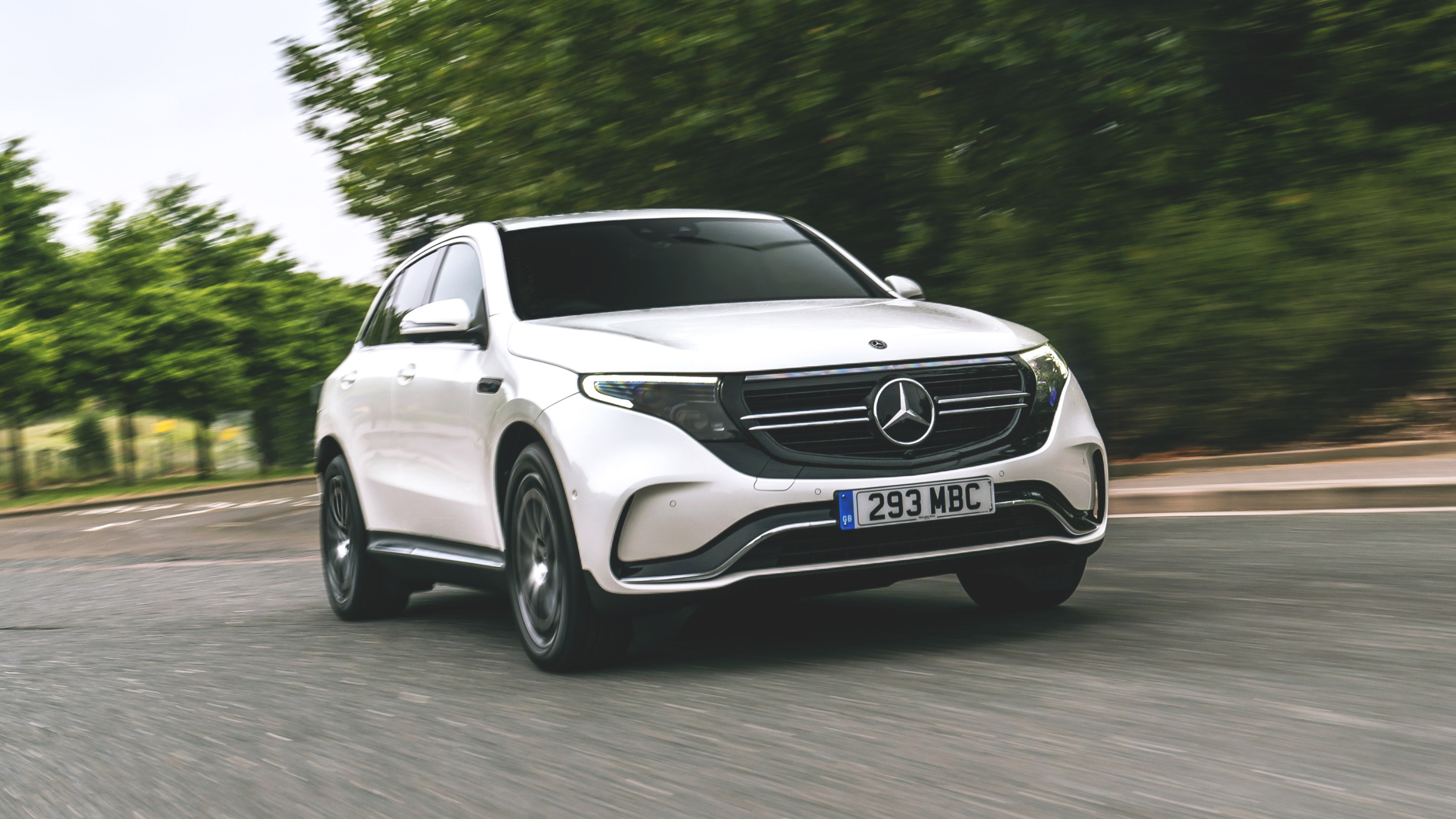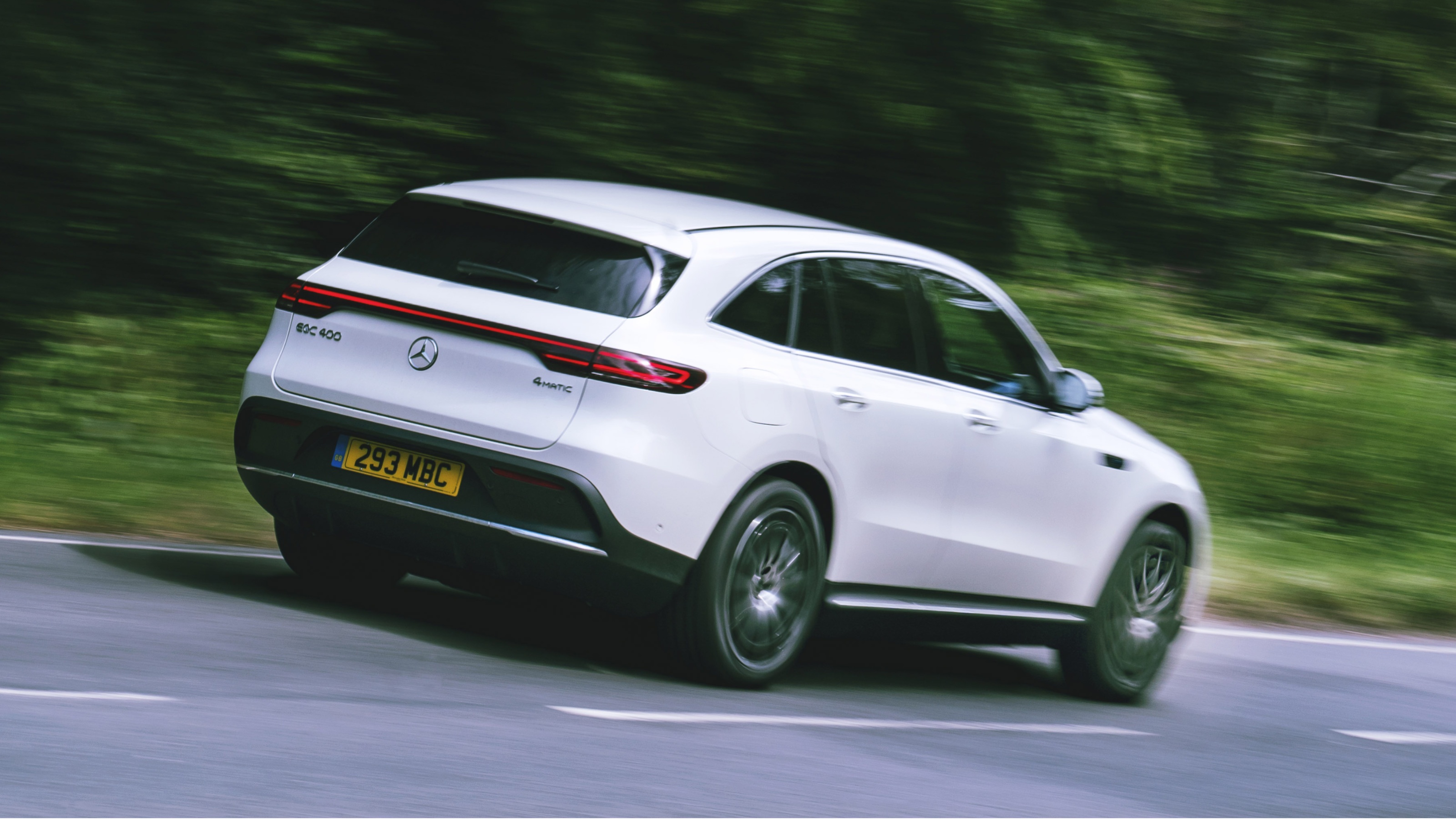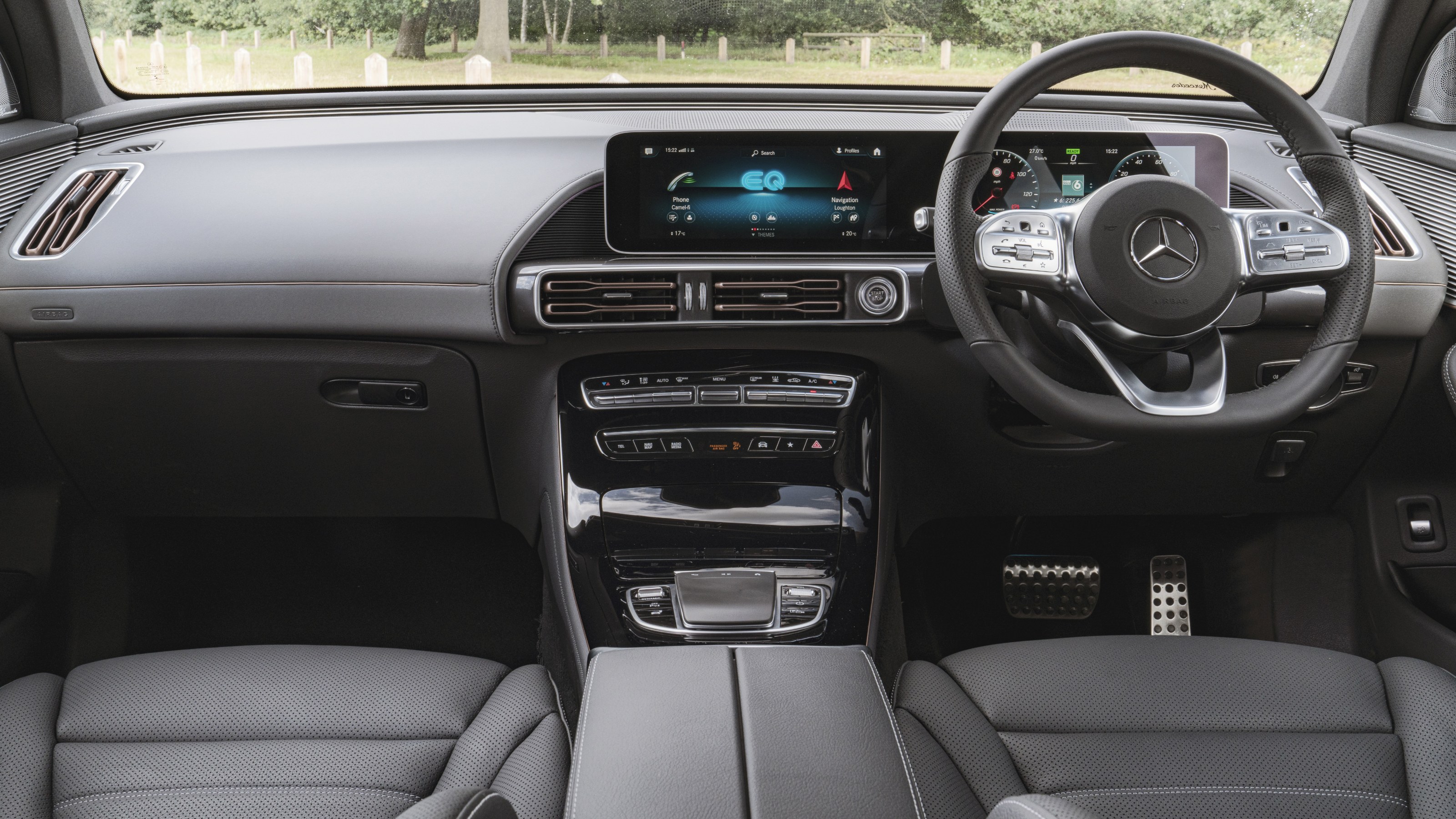
Mercedes-Benz EQC review
Driving
What is it like to drive?
Awesome refinement is the EQC’s main appeal. Low-speed motor whine is absent, and high-speed tyre and suspension noise are also brilliantly suppressed. It's fabulously serene. The ride isn't pillow-soft, so you know there's a bumpy road beneath. But it does filter out secondary harshness really nicely.
That sounds promising. Is it all good news?
Sadly not. It's a two-and-a-half tonne car and feels it, especially since the damping – which isn't adaptive – is soft. Chuck it around bends and it rolls and pitches and generally comes over all calm-down-calm-down on you. Just ease off and stretch the range.
Ah yes, that range figure…
Yeah, 259 miles isn't great for a premium SUV these days, is it? The similarly-priced (and recently updated/renamed) Audi Q8 e-tron now offers a 343-mile iteration, while something like the Tesla Model Y Performance starts at under £60k, can do 319 miles on a charge and quotes a 0-60mph time of just 3.5 seconds.
On a route consisting mostly of very gentle 50mph A-roads, TopGear.com managed to reach close to the WLTP-rated efficiency and range of the EQC. In normal British conditions and on faster motorways, you’ll likely be closer to 200 miles of range or perhaps even less in the winter.
Is charging quick?
If you can find a DC charger that'll go to 110kW, it can go from 10 per cent to 80 per cent charged in 40 minutes. That's adding about four and a half miles of range for every minute you're hooked up. If charging at home, it'll be an overnight job for a full top-up.
And what about the EQC’s performance?
Acceleration is solid if you ask for it in Sport mode, thanks to a combined 402bhp from the two motors. The 0-62mph number is 5.1 seconds, and it'll get close to that even in poor grip because the traction control is so good.
But the performance impression comes more from the motors' instant wits than it does from the actual sustained rate of acceleration, which is tethered by the mass. Also, like many EVs, its acceleration from above 60mph or so would be beaten by a combustion car in kickdown mode. There's no kickdown here of course: it's single-speed.
You can set the EQC's regenerative braking at several levels. The cleverest is the efficiency-chasing 'auto' setting. This uses the car's camera and radar sensors, and navigation data, to build up a picture of what's ahead. The speed of the car you're following, the speed limits applying and upcoming, hills and valleys and junctions and bends – they're all taken into account. Dashboard symbols encourage you to lift early and coast, and regeneration cuts in only when needed.
This can feel odd, because the car doesn't consistently behave according to your foot position. But it eventually encourages you into range-stretching behaviour that doesn't actually lose you much time in normal traffic. Plus, when you do decide to go it your own, the brake pedal feel and regen integration is better than in newer Merc EVs. The EQC’s steering is exceptionally light, though.
Featured

Trending this week
- Car Review
BMW iX3






